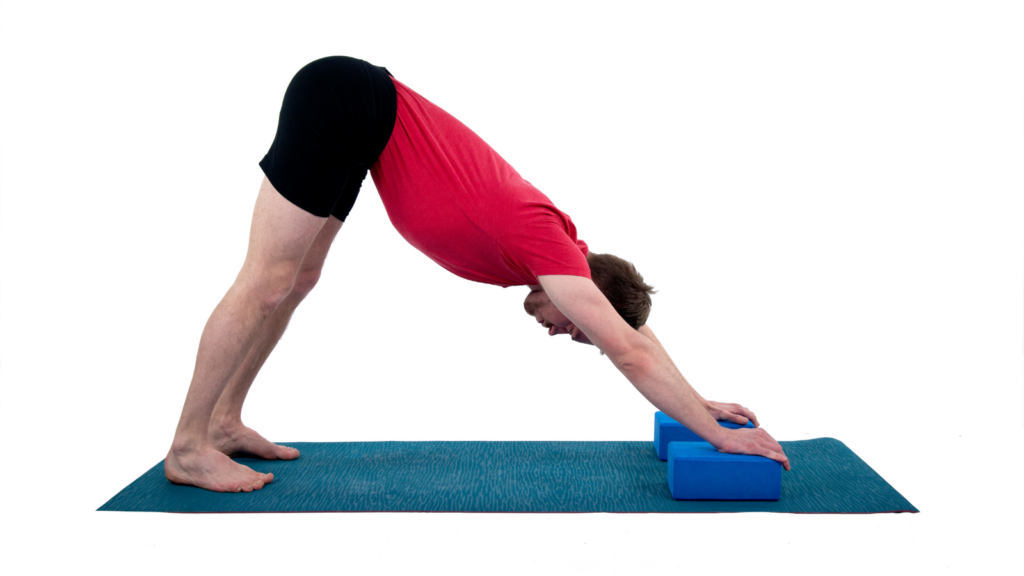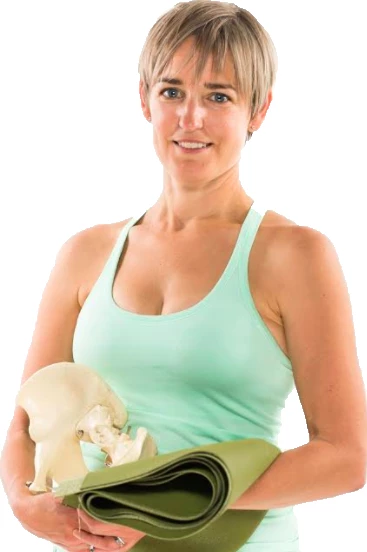Refining Your Cues: 3 Ways to Prevent the Whack-a-Mole Approach to Yoga Alignment

As a yoga teacher, have you ever had the following experience as you taught yoga to a private student or group?
A yoga teacher sees their student in Adho Mukha Svanasana (Downward Facing Dog Pose), and their palms aren’t flat on the floor, and the weight is shifted to the lateral side of the hand. They cue the student to bring the palms to the floor.
When the student does this, their head lifts up, so the teacher asks the student to bring the head down, which follows with the student’s ribs flaring. The teacher again cues the student to bring the ribs in and the back rounds, and after the teacher asks or adjusts the student to lengthen their spine, the palms lift up. While this may be amusing to read, this veritable game of “whack a mole” leads the teacher to wonder, “Why on Earth are the cues offered not working?” 
Many times when I meet these teachers, they are in a state of resignation that ranges from “the students don’t have body awareness, so I can only take them so far” to “I am done with yoga; I can’t make a difference,” to maybe even “I suck as a teacher.”
3 Ways to Refine Your Yoga Alignment Cues
1. Provide Alignment Cues At the Right Time
The biggest and most influential consideration is determining the right time to provide alignment cues or adjustments. Is it before or after the student has come into the pose?
If you’re providing cues when the student has already come into the pose, it is too late. The student has already compensated their way out of alignment, and adjusting them after the fact will only cause more compensation. The key is to notice the compensation when it occurs and make the appropriate adjustments at that time, even if it means stopping the movement and starting again.
2. Watch Your Student’s Actual Movement
Consider how you are watching your students. Oftentimes, the focus is on the end result, which is what leads to “whack a mole.” Watch your students as they move into the pose.
Using the example of the Downward Facing Dog Pose above, notice where and when the weight shift of the hands happens. It likely didn’t happen at the end position; rather, it happened on the way to the end position. If you can bring awareness earlier in the movement, your student’s pace of progress will improve dramatically.
3. Understand Your Student’s True Capability and Build From There

Some might not well receive this last point. Consider that most yoga poses, while super cool and fun, are inaccessible to most yoga students. Most yoga students do not have the mobility, stability, strength, control, or coordination to be able to move many of the quintessential yoga poses (hence the Downward Facing Dog dilemma above).
They can compensate well to get into the pose, but that level of compensation isn’t really serving them: it isn’t building their core, it isn’t helping them to release tissue or become stronger, and in many cases, is setting them up for getting tighter and experiencing tension or injury.
All is not lost. Once you shift the way that you see and what you are focusing on, the changes in your practice—whether as a teacher or student—will blow your mind. Tightness and injury created by your practice can be a thing of the past, and suppleness and ease will grow.
Reprinted with permission from Susi Hately & functionalsynergy.com
Whack a Mole image is a Google image
 Susi believes that healing is possible. As a young student of yoga, she began to combine the ancient practices of yoga with her BSc.Kinesiology. She was working at a Vancouver pain clinic and all of her clients had persistent pain. They got better faster with Susi’s integrative approach. As she continued to learn more about yoga, she was surprised by how many yoga teachers were in pain. Most viewed their pain as “normal”. She began to explore how yoga was being taught and practiced.
Susi believes that healing is possible. As a young student of yoga, she began to combine the ancient practices of yoga with her BSc.Kinesiology. She was working at a Vancouver pain clinic and all of her clients had persistent pain. They got better faster with Susi’s integrative approach. As she continued to learn more about yoga, she was surprised by how many yoga teachers were in pain. Most viewed their pain as “normal”. She began to explore how yoga was being taught and practiced.
Since 2001, Susi has been on a mission to teach people that they can reduce or eradicate pain. Pain may be a normal physiological process. It doesn’t have to be a normal way of life. And it isn’t only people with pain whom she works with… She also helps people reduce autoimmune flares associated with lupus and rheumatoid arthritis. She supports clients recovering from surgery. Surgeons and post-op physical therapists are consistently impressed with how her clients progress.
Susi’s programs blend sound anatomical principles of kinesiology with the wisdom of yoga. This therapeutic combination settles pain and increases vitality for life. She’s the creator of the Body-Mind Response Model, a tool that supports people in their own healing. Susi has also created the Integrative Healing Model. This tool supports the healing relationship between the health professional and the client.
She’s set a new standard in mind–body rehabilitation for helping people get well. Her programs have been studied at the University of Calgary. Doctors, physical therapists, occupational therapists, and massage therapists learn from her as well, and her trainees fly in from the US, UK, Greece, Caribbean, and Asia to learn her successful approach to healing.
For more about Susi, visit https://www.functionalsynergy.com



